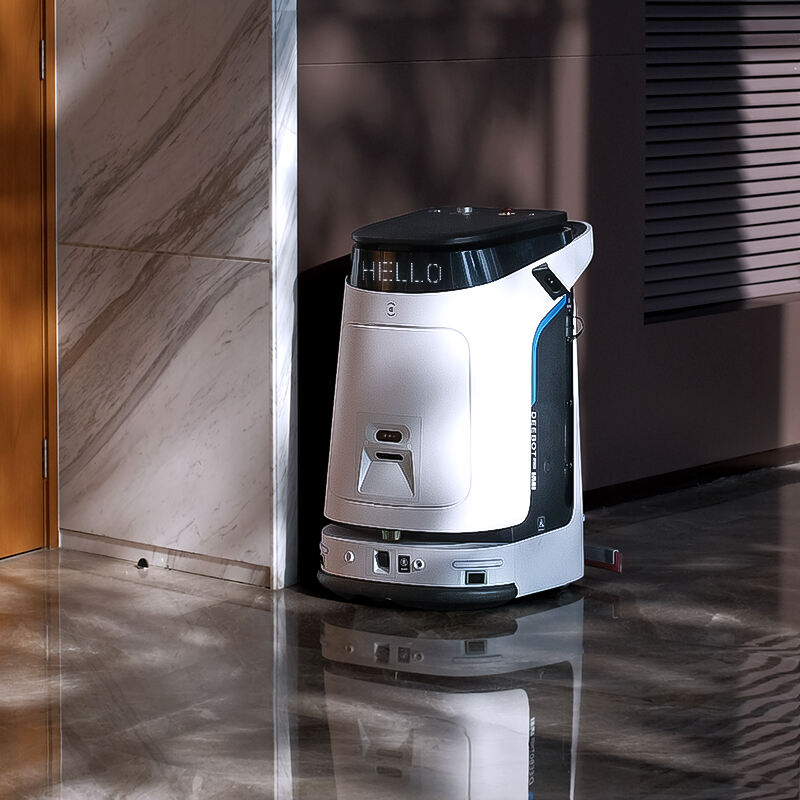Understanding Industrial Floor Cleaning Equipment Challenges
Commercial floor cleaning machines are essential tools in maintaining pristine facilities across various industries. From retail spaces to warehouses, these powerful machines handle the demanding task of keeping floors spotless and safe. However, like any sophisticated equipment, they can encounter operational issues that impact their performance and efficiency.
Key Components and Their Vulnerabilities
Battery and Power System Issues
The heart of any commercial floor cleaning machine lies in its power system. Battery-operated models frequently experience decreased runtime and charging problems. Signs of battery deterioration include shorter operating periods between charges and inconsistent power output. Regular maintenance, proper charging cycles, and storing machines in temperature-controlled environments can significantly extend battery life.
Modern commercial floor cleaning machines often feature sophisticated battery management systems, but they're not immune to problems. Sulfation, a common battery issue, occurs when machines are left unused for extended periods, leading to crystalline deposits that reduce battery capacity. Implementing a regular usage schedule and following manufacturer-specified charging protocols helps prevent these issues.
Brush and Pad Drive Complications
The brush system directly impacts cleaning effectiveness. Worn brushes, misaligned pads, or damaged drive motors can compromise cleaning results. Regular inspection of brush bristles, proper pad attachment, and monitoring motor performance are crucial maintenance steps. Signs of trouble include uneven cleaning patterns, unusual noises during operation, or reduced scrubbing effectiveness.
Drive systems require consistent lubrication and alignment checks. When brushes encounter excessive resistance, motor strain increases, potentially leading to burnout. Implementing proper training ensures operators recognize early warning signs and adjust cleaning patterns accordingly.

Solution Delivery System Challenges
Water Flow and Dispensing Problems
The solution delivery system must maintain consistent flow for optimal cleaning results. Clogged filters, damaged pumps, or blocked nozzles can disrupt solution distribution. Regular cleaning of filters, checking pump pressure, and inspecting spray patterns helps maintain system efficiency. Operators should monitor solution usage rates to identify potential leaks or flow inconsistencies.
Hard water deposits pose a particular challenge, gradually building up in lines and nozzles. Implementing a water softening system or regular descaling maintenance prevents mineral accumulation and extends component life. Chemical compatibility also plays a crucial role – using approved cleaning solutions prevents system damage.
Recovery Tank and Vacuum System Issues
Effective water recovery ensures safe, dry floors after cleaning. Vacuum motor problems, damaged squeegees, or blocked recovery systems reduce drying efficiency. Regular inspection of vacuum seals, squeegee blades, and recovery tank filters maintains optimal performance. Strange sounds during operation often indicate vacuum system problems requiring immediate attention.
Recovery tank maintenance includes thorough cleaning after each use, checking float mechanisms, and ensuring proper sealing. Bacterial growth in poorly maintained tanks can cause odors and reduced vacuum efficiency. Establishing clear cleaning protocols between shifts prevents these issues.
Electronic Control System Failures
Control Panel Malfunctions
Modern commercial floor cleaning machines rely on sophisticated electronic controls. Panel failures can render machines inoperable or cause erratic behavior. Common issues include unresponsive buttons, display malfunctions, or system lockups. Regular software updates, when available, often resolve operational glitches and improve functionality.
Moisture protection plays a vital role in control system longevity. Despite water-resistant designs, prolonged exposure to cleaning solutions or high humidity can damage electronic components. Training operators to protect control panels during cleaning and maintenance procedures extends system life.
Sensor and Safety System Problems
Safety features protect operators and facilities but can malfunction. Proximity sensors, emergency stops, and automated shutdown systems require regular testing. False triggers or failed safety responses indicate immediate service needs. Maintaining clean sensor surfaces and proper calibration ensures reliable operation.
Integration between safety systems and main controls becomes more complex with each new model generation. Diagnostic tools help identify specific component failures, but proper operator training remains essential for recognizing potential safety issues before they cause accidents.
Mechanical Drive System Complications
Wheel and Propulsion Problems
Drive wheel issues affect machine maneuverability and operator comfort. Worn tires, bearing failures, or drive motor problems can make machines difficult to control. Regular inspection of wheel condition, proper inflation where applicable, and monitoring drive system performance prevents unexpected breakdowns.
Transaxle systems require particular attention in larger machines. Oil levels, gear wear, and seal condition impact operational reliability. Establishing regular maintenance schedules for drive components extends equipment life and maintains optimal performance.
Frame and Housing Structural Issues
Structural integrity affects both safety and cleaning effectiveness. Cracked housings, loose components, or damaged frames require immediate attention. Regular inspection of mounting points, hinges, and protective covers prevents progressive damage. Corrosion protection becomes especially important in facilities using aggressive cleaning chemicals.
Vibration often indicates underlying structural problems. Monitoring machine stability during operation helps identify developing issues before they cause significant damage. Proper storage and transport procedures prevent unnecessary strain on structural components.
Frequently Asked Questions
How often should commercial floor cleaning machines undergo professional maintenance?
Professional maintenance should be scheduled every 3-6 months, depending on usage frequency and operating conditions. Daily operator checks and weekly basic maintenance complement professional service intervals to ensure optimal performance and prevent major breakdowns.
What causes unusual noise in commercial floor cleaning machines?
Unusual noises typically result from worn bearings, misaligned components, or debris in mechanical systems. Immediate investigation of new noises helps prevent extensive damage and identifies maintenance needs before critical failures occur.
Why do cleaning results become inconsistent over time?
Inconsistent cleaning results often stem from worn brushes, improper solution flow, or vacuum system inefficiencies. Regular maintenance of these core systems, combined with proper operator training and chemical management, maintains consistent cleaning quality.
How can operators extend the life of their floor cleaning equipment?
Operators can extend equipment life through proper daily maintenance, following manufacturer guidelines for operation and chemical use, maintaining clean solution and recovery tanks, and promptly addressing minor issues before they develop into major problems.

